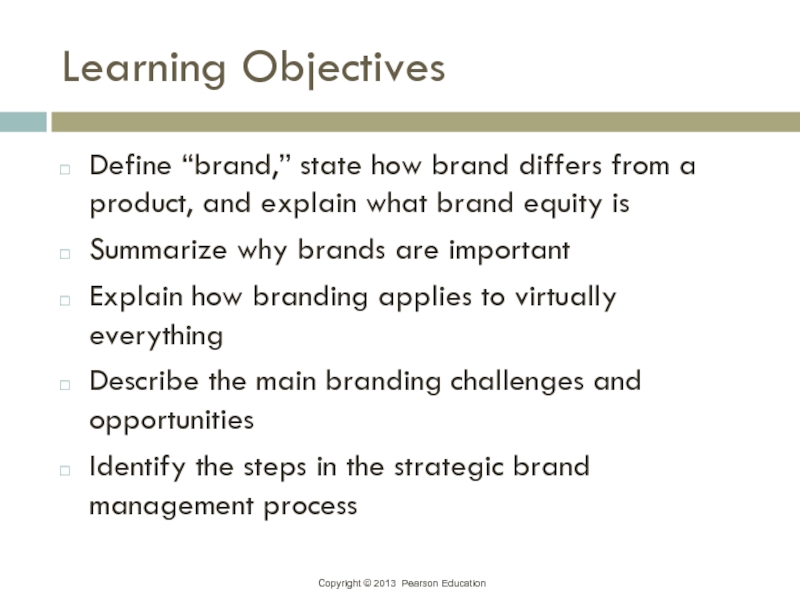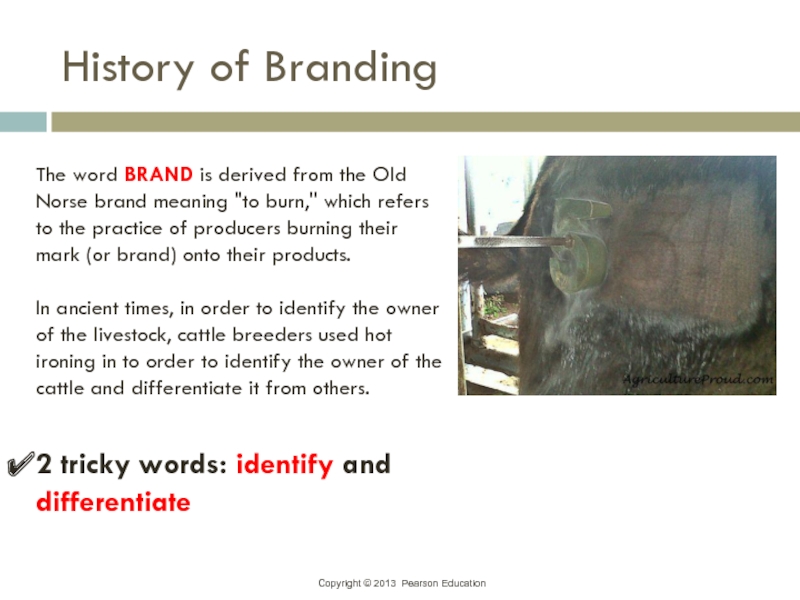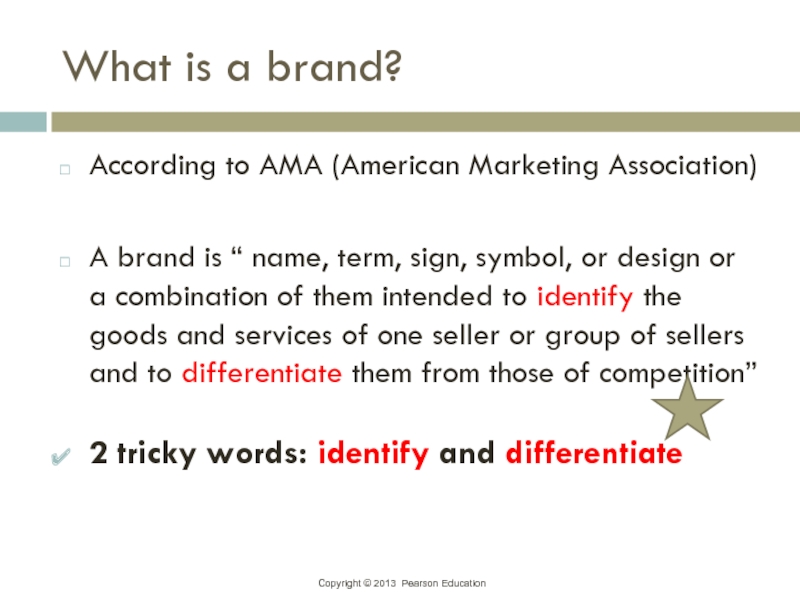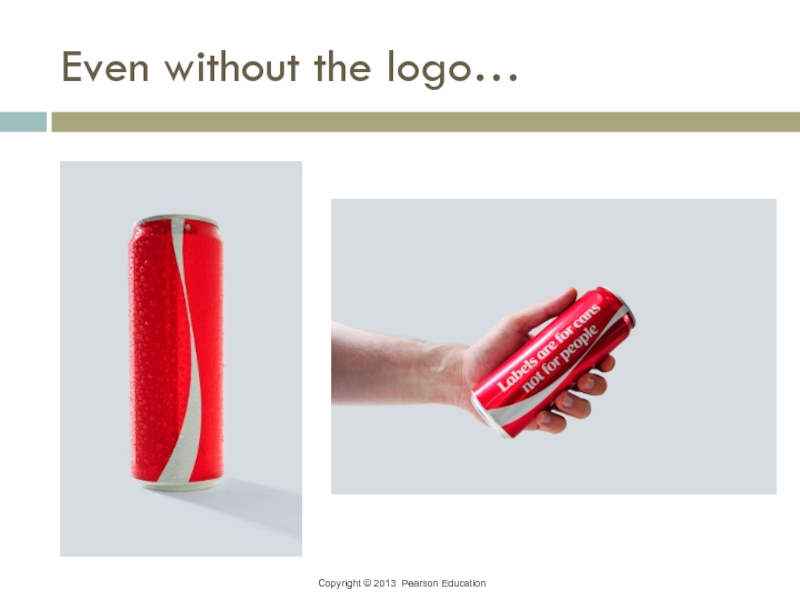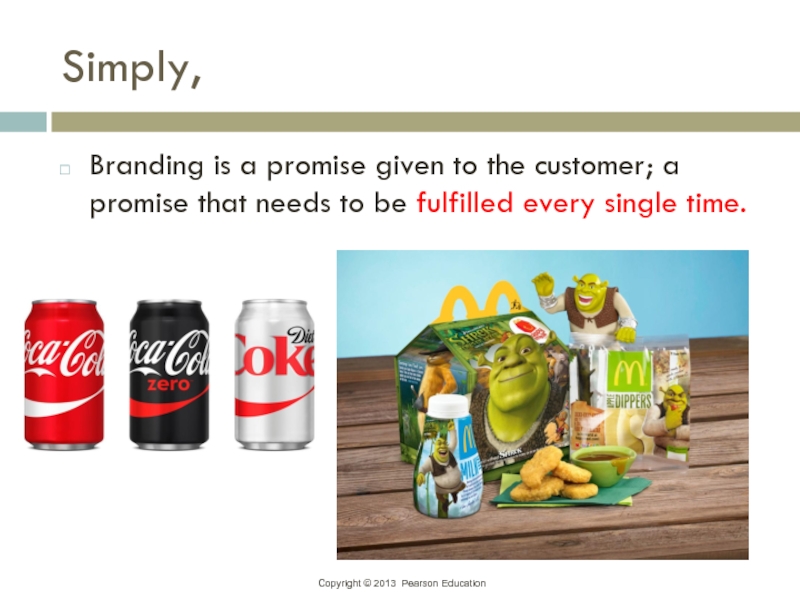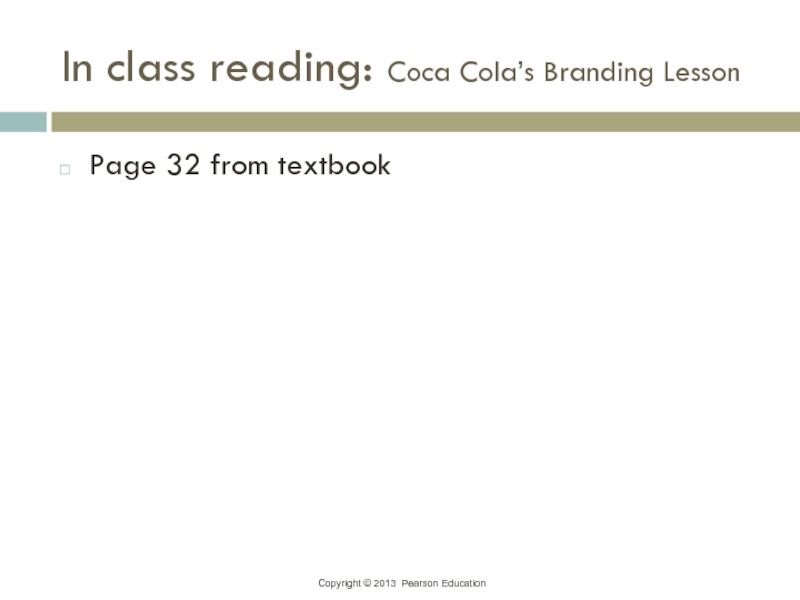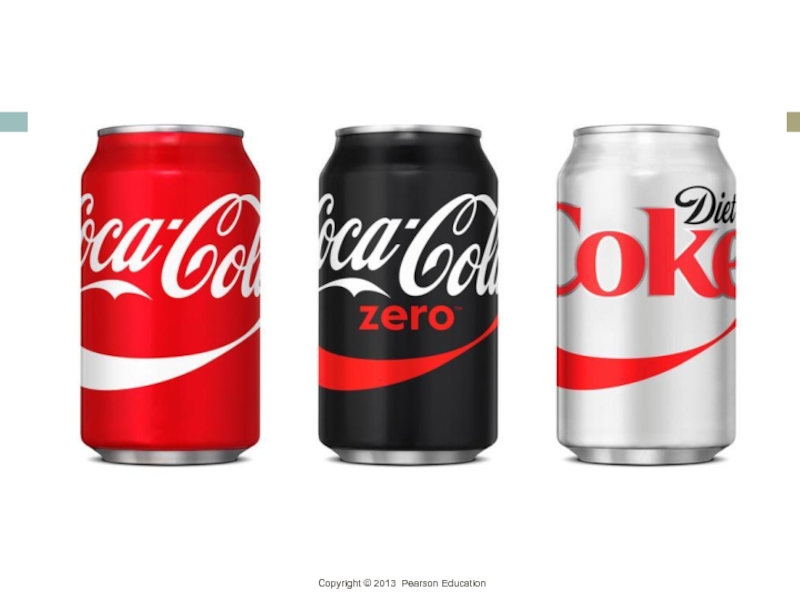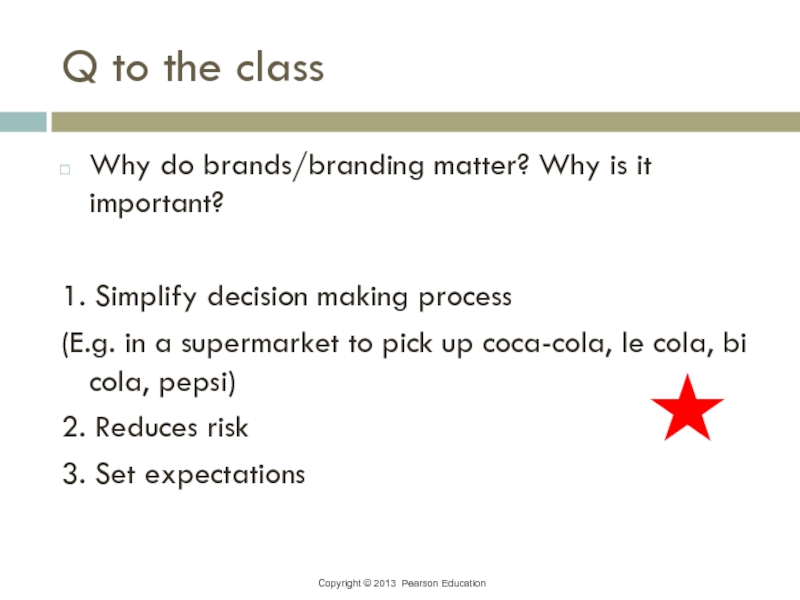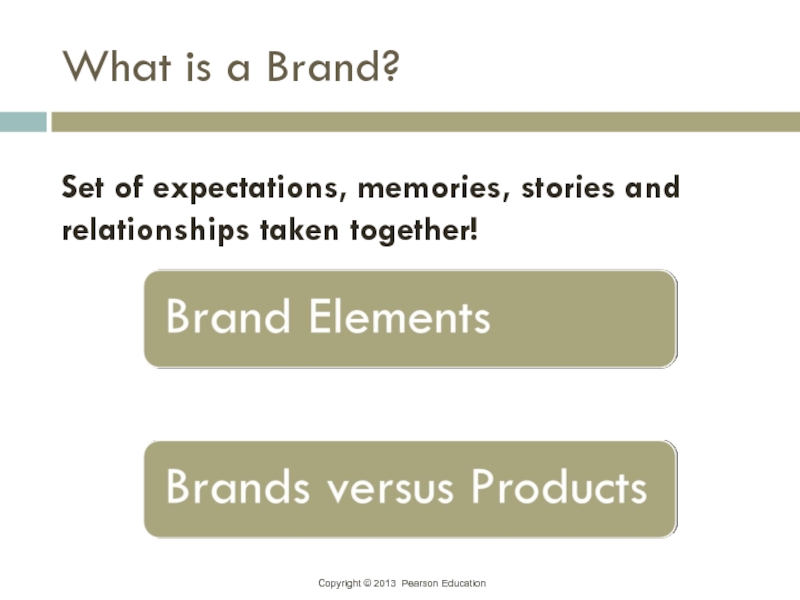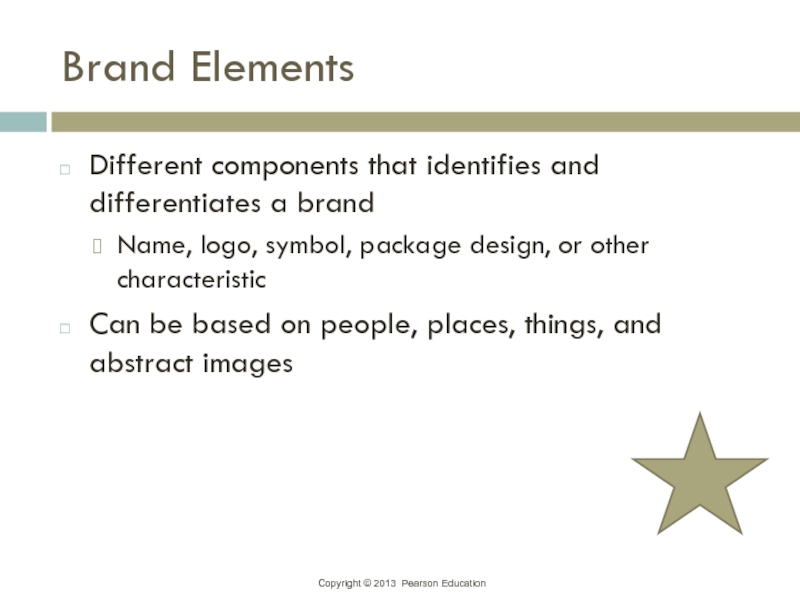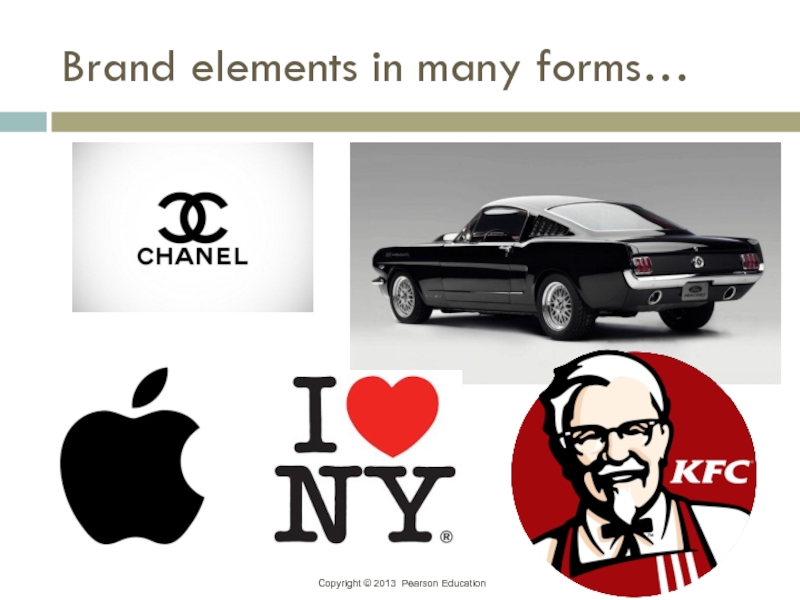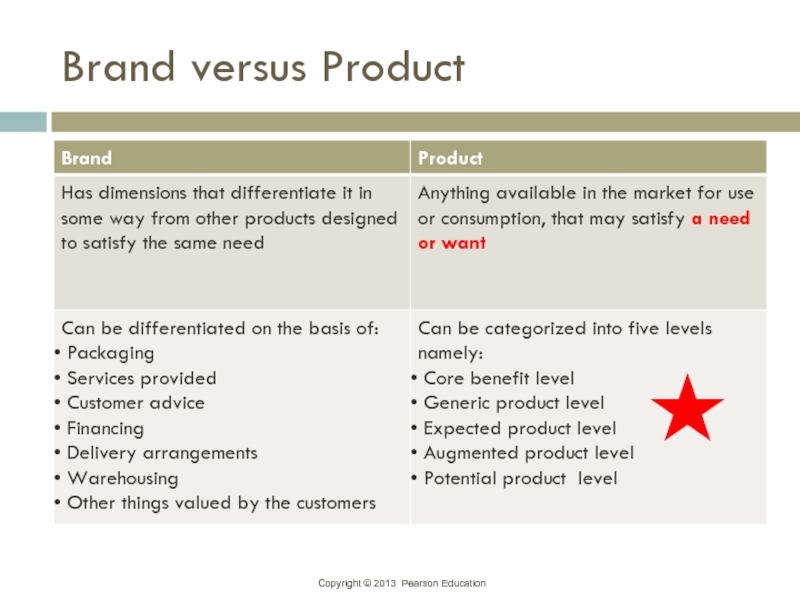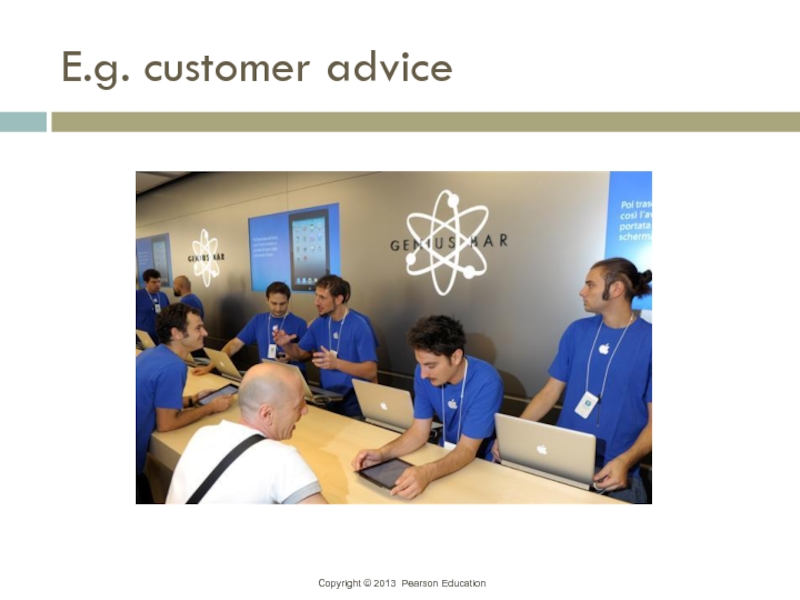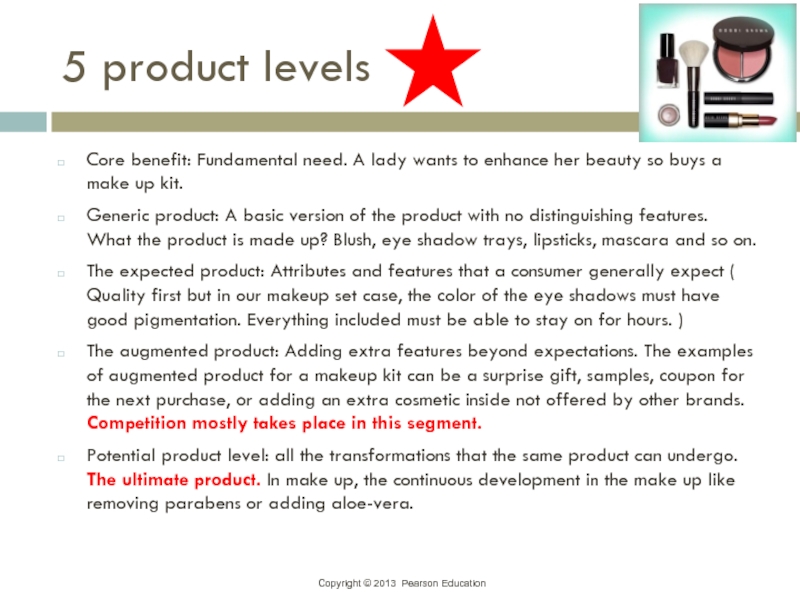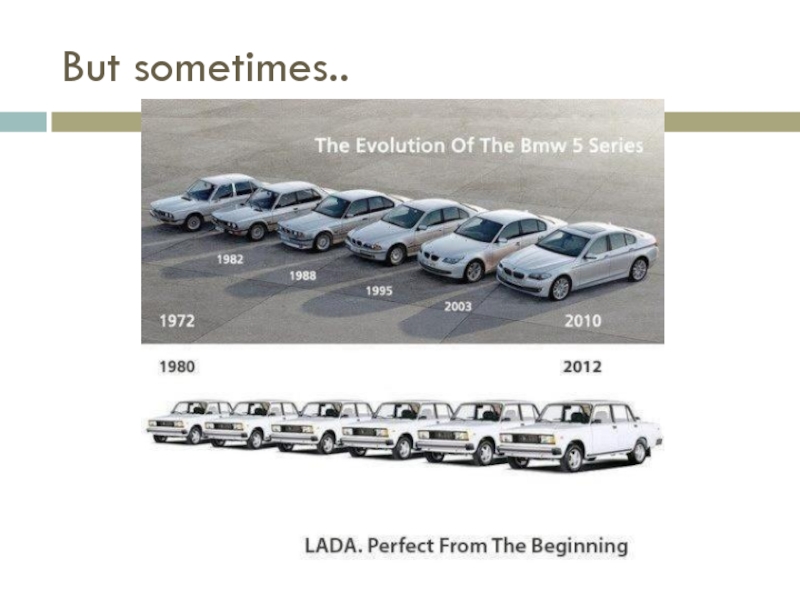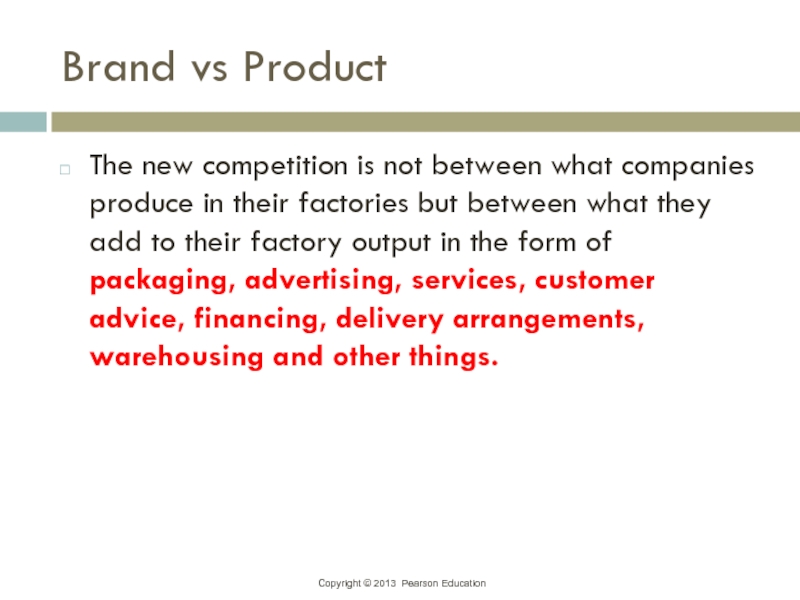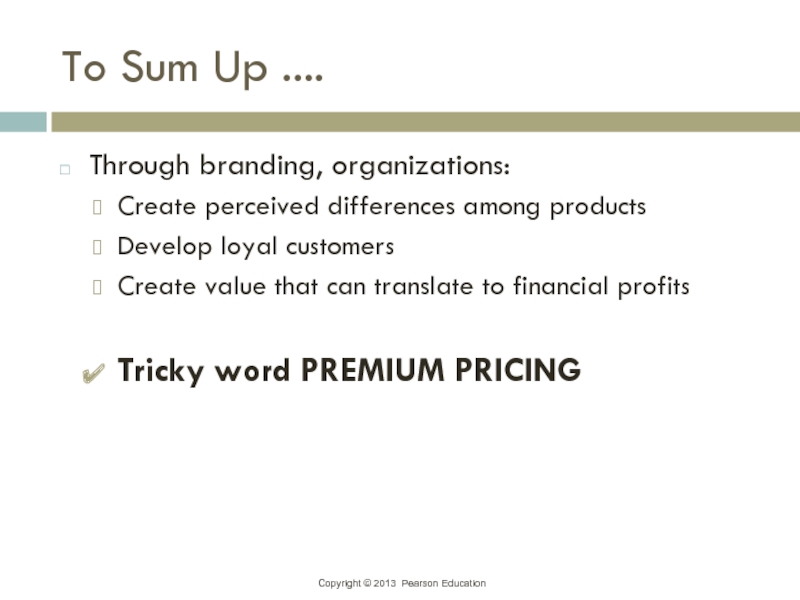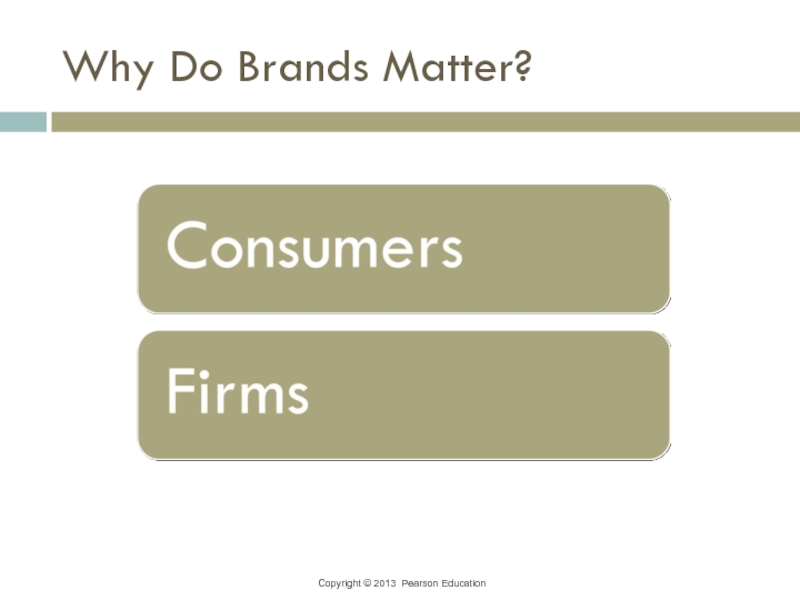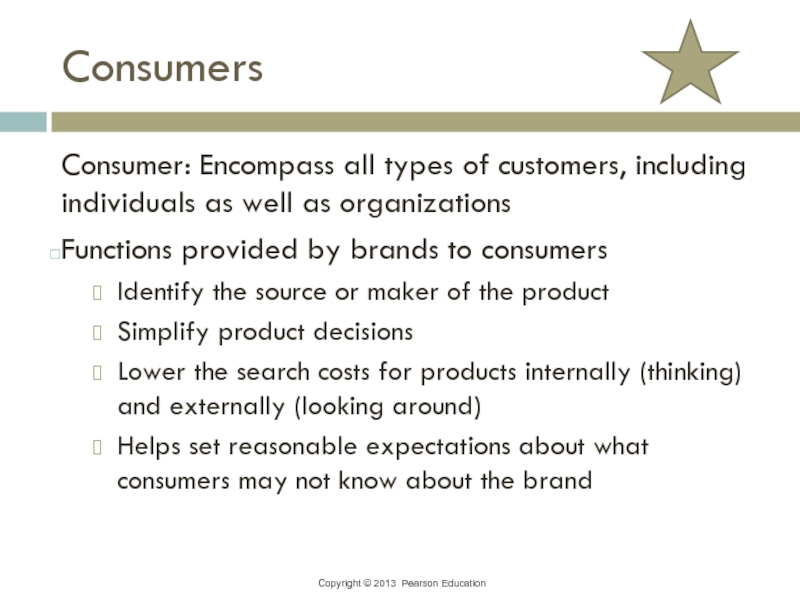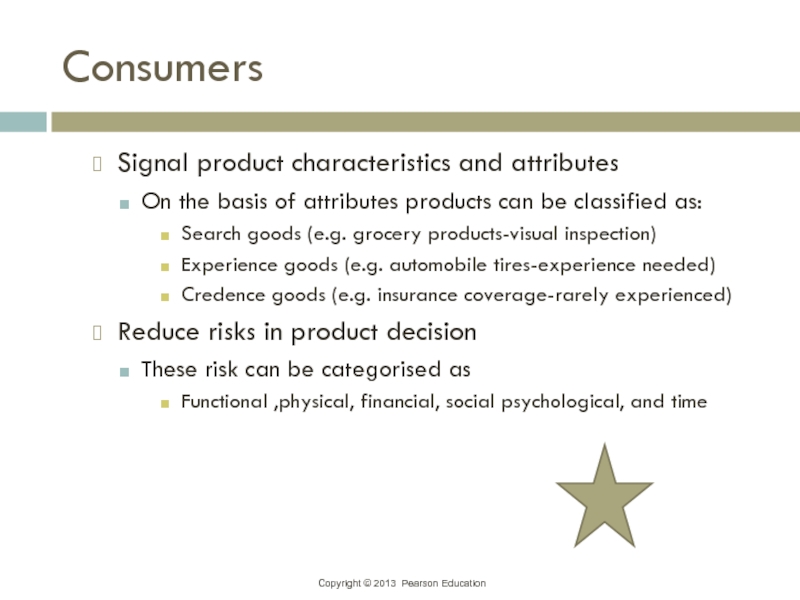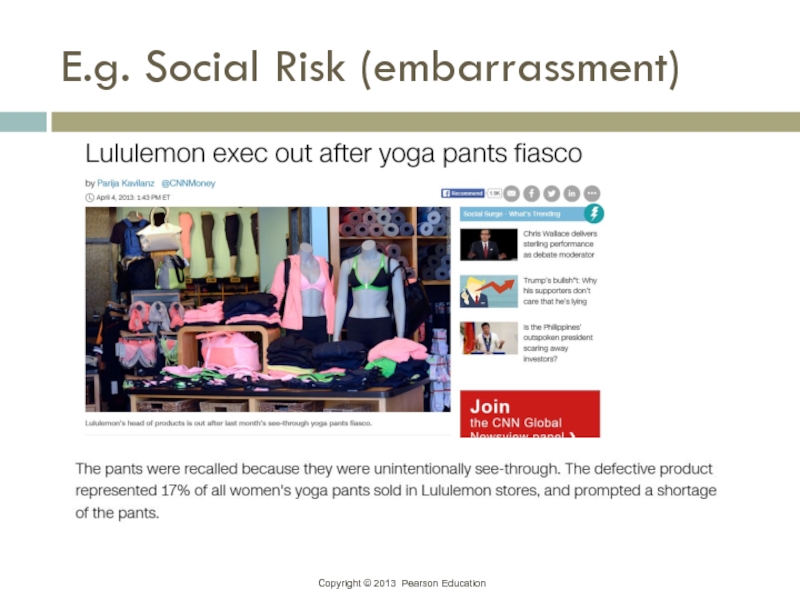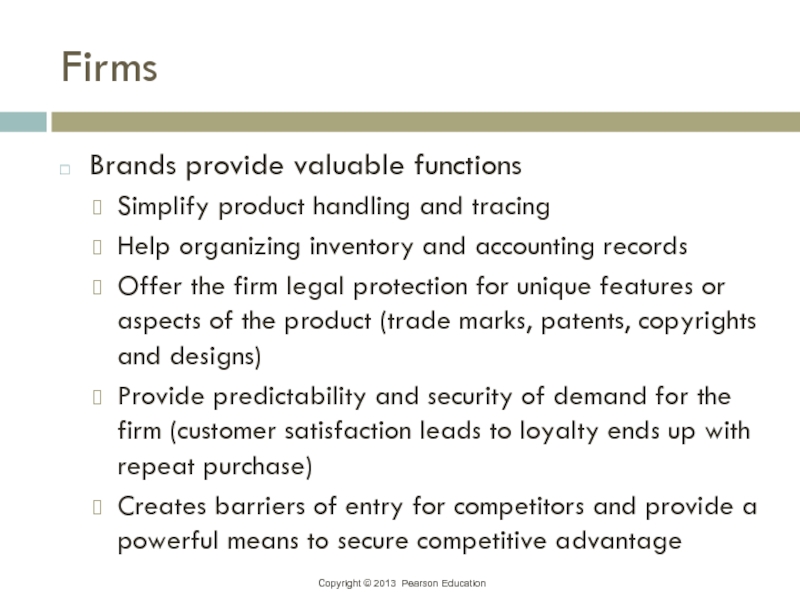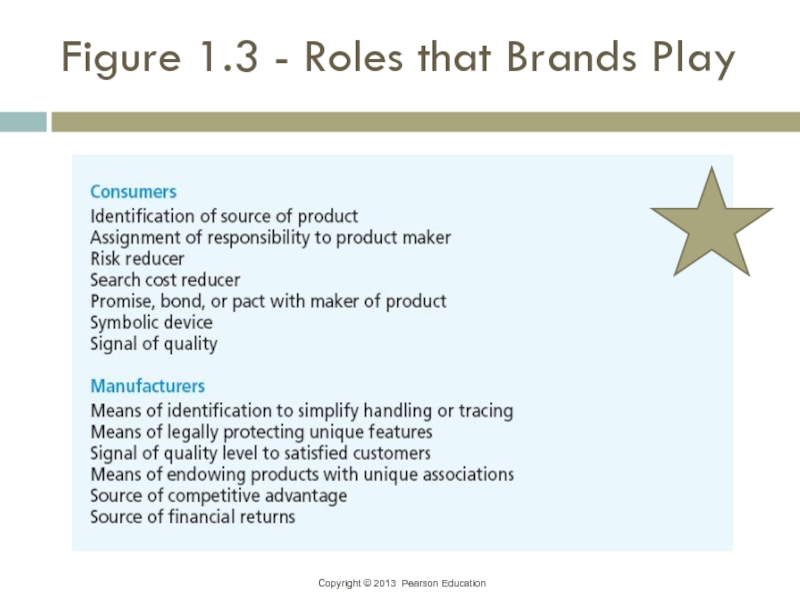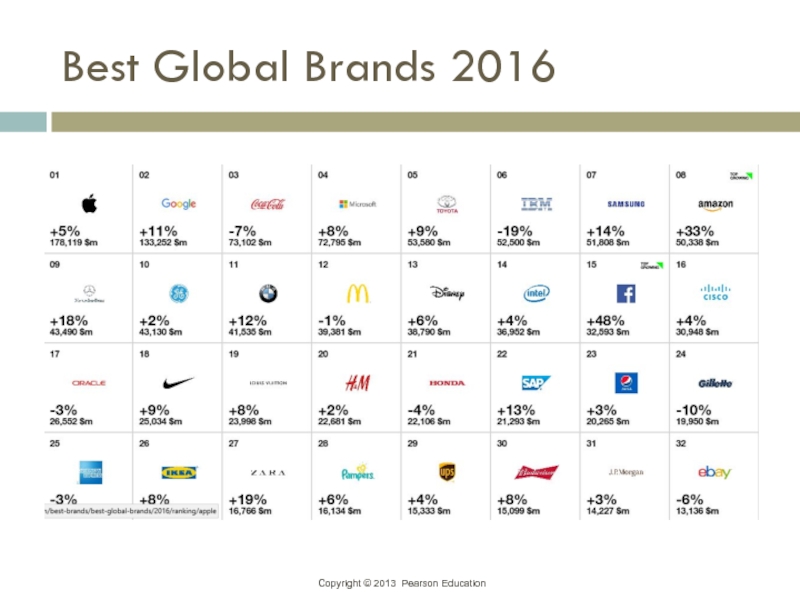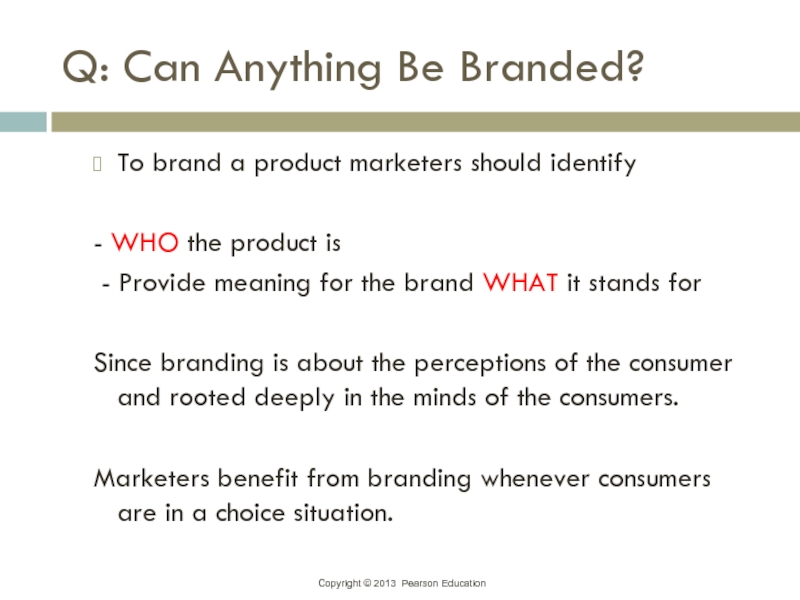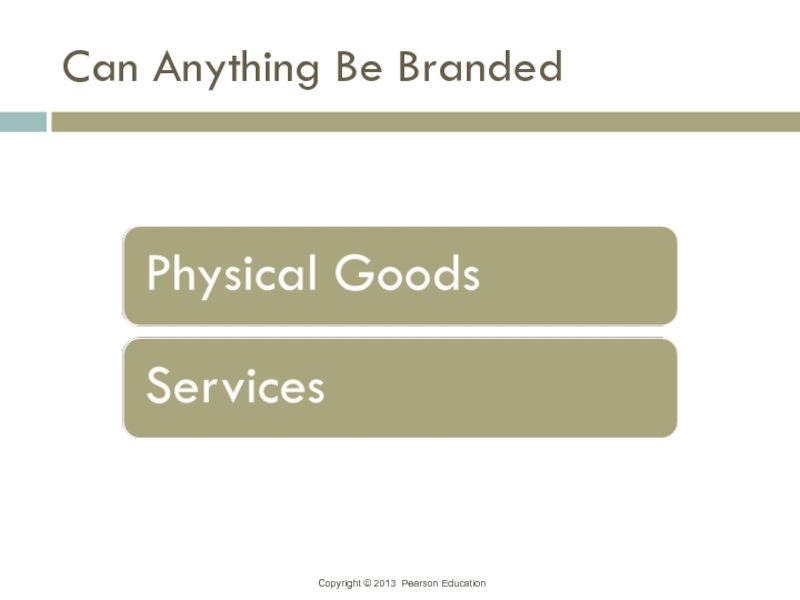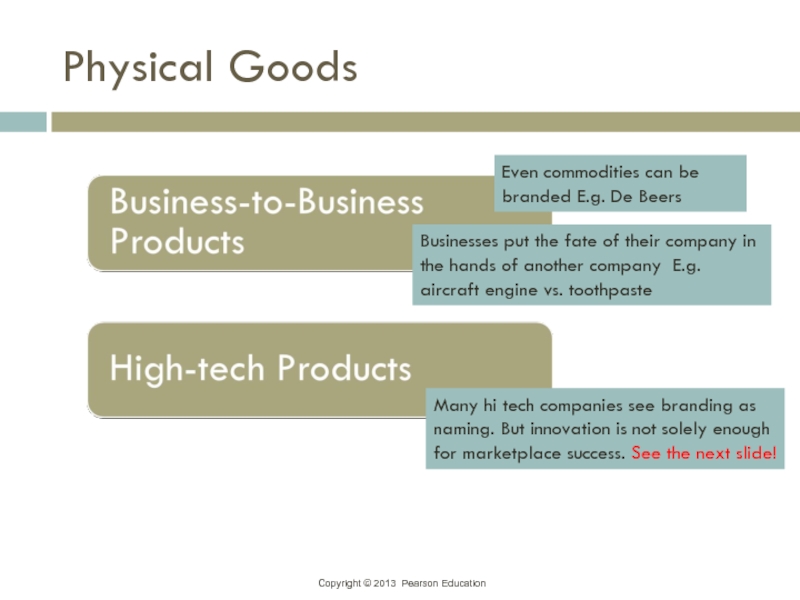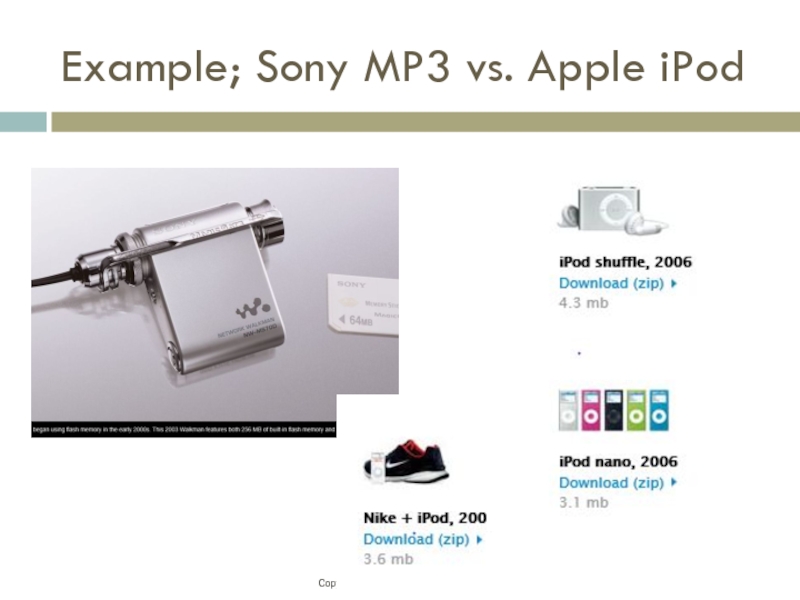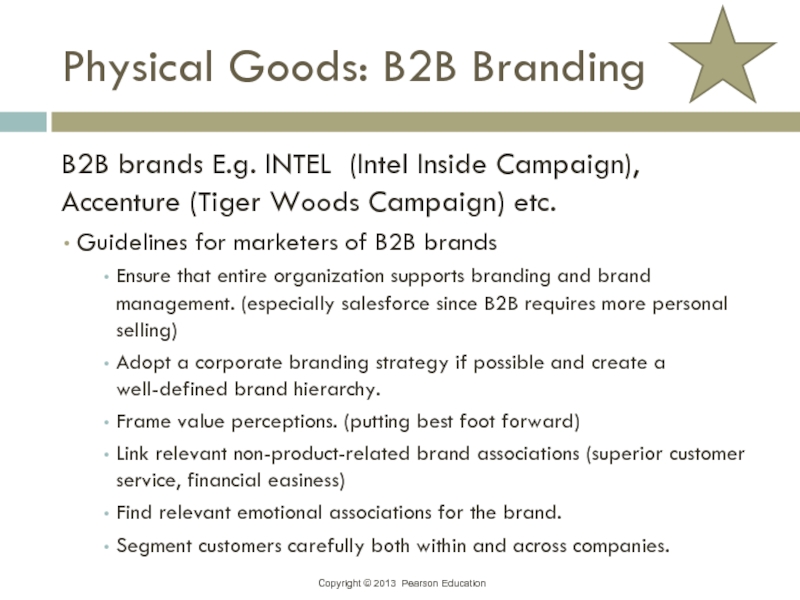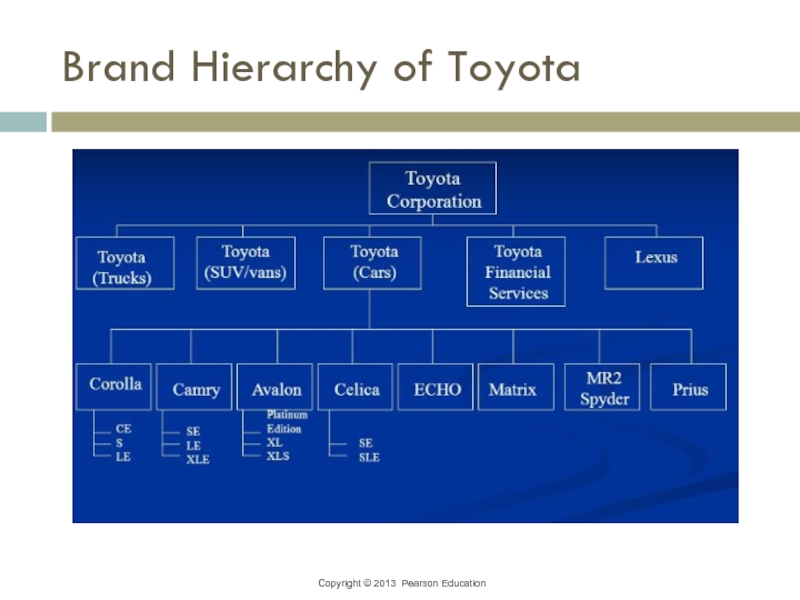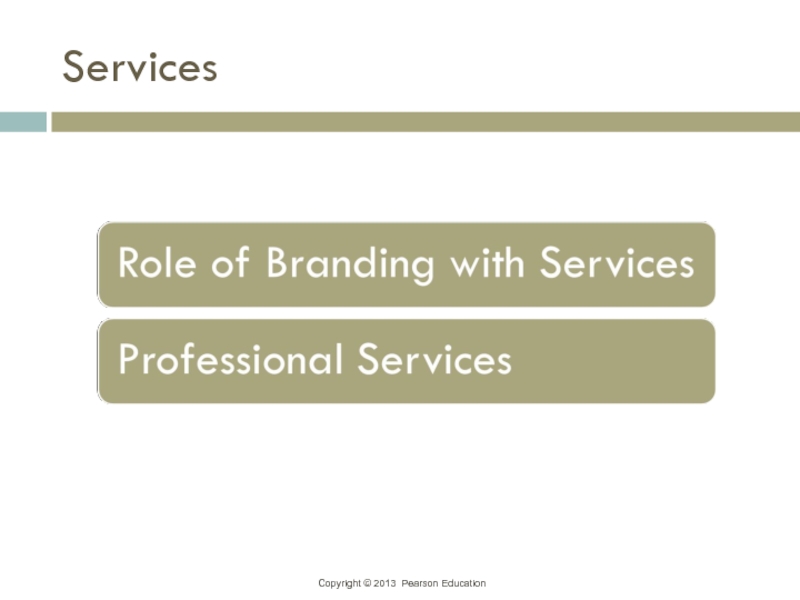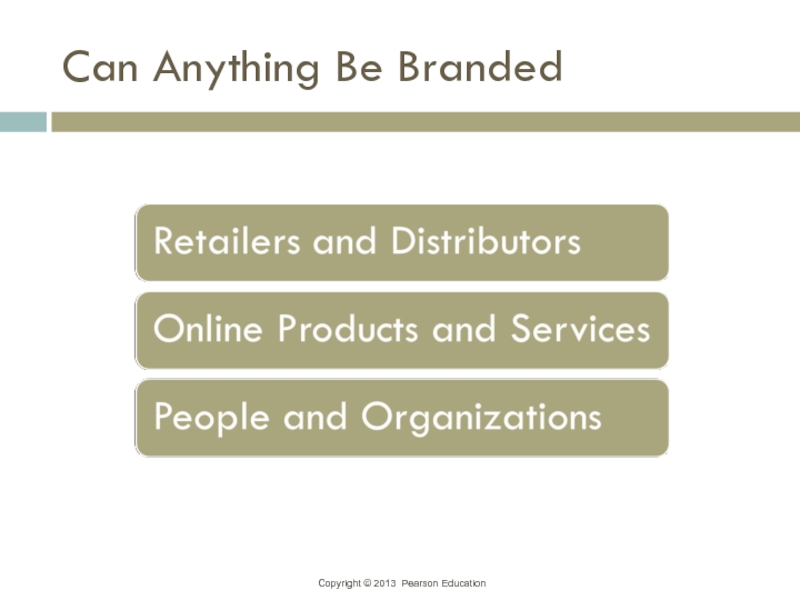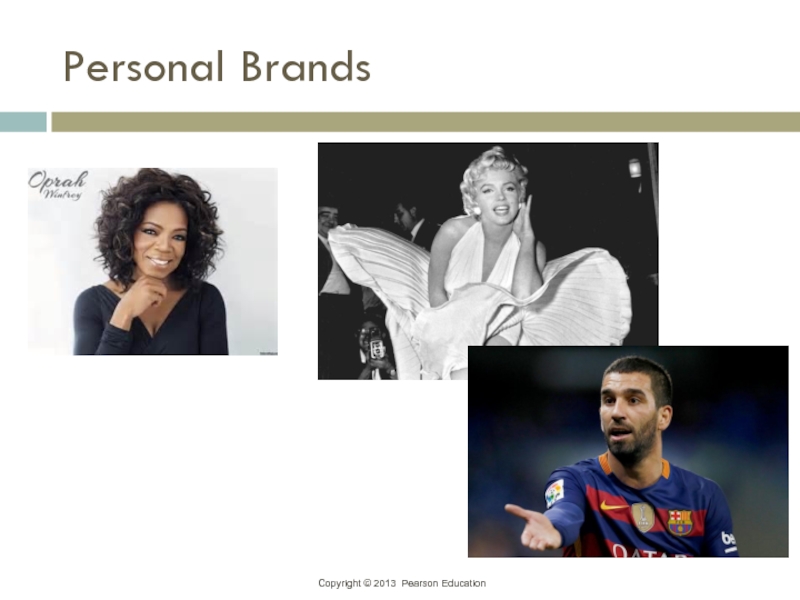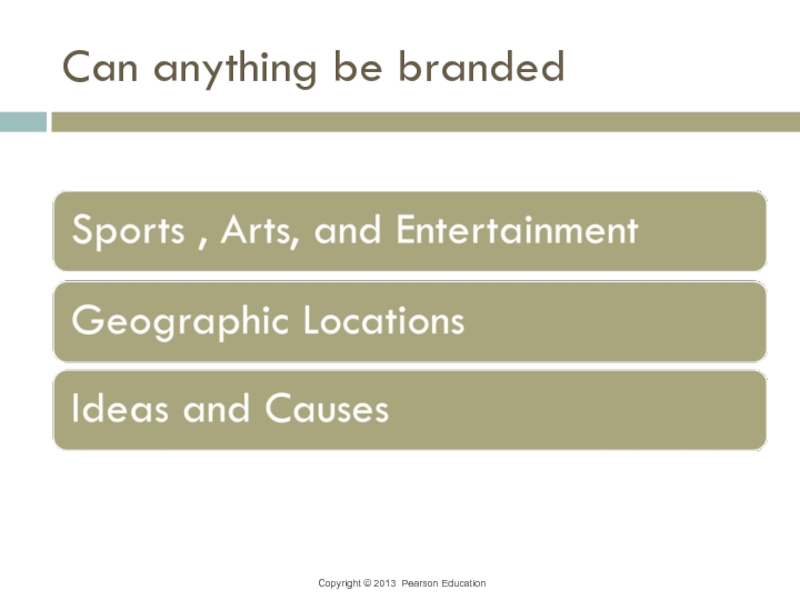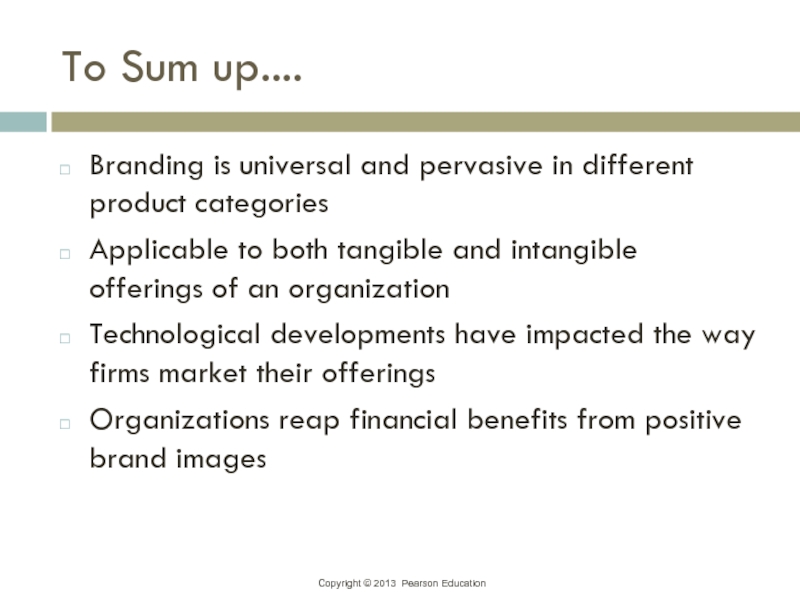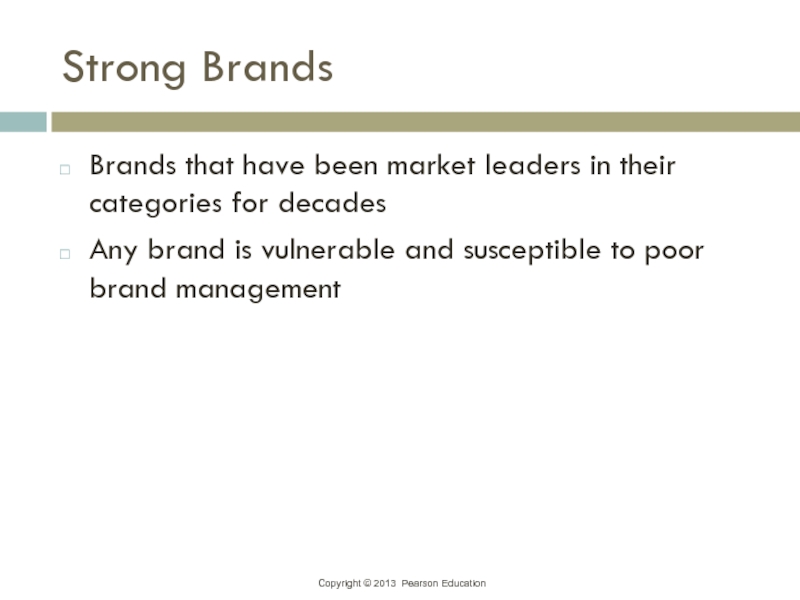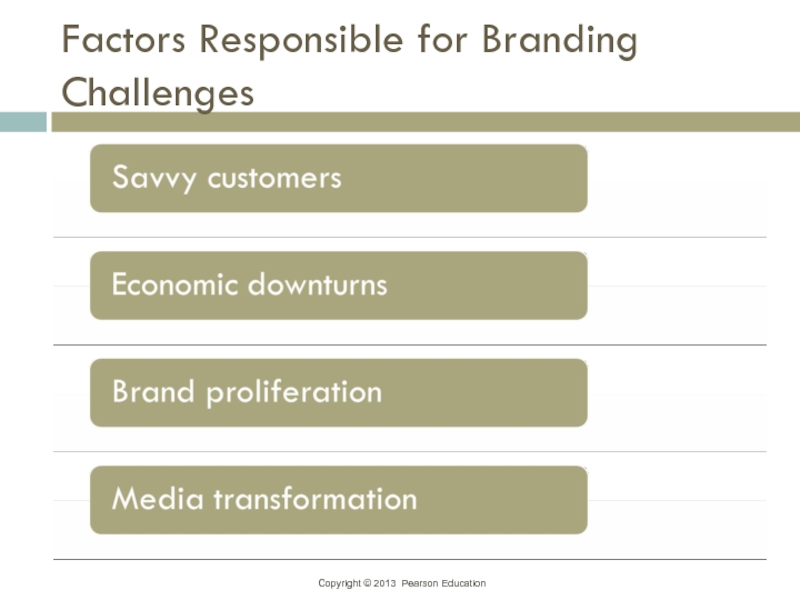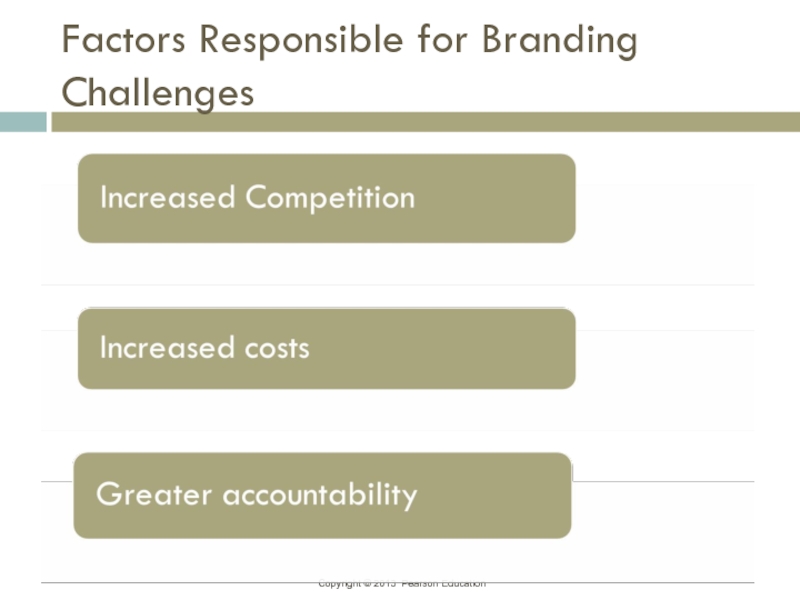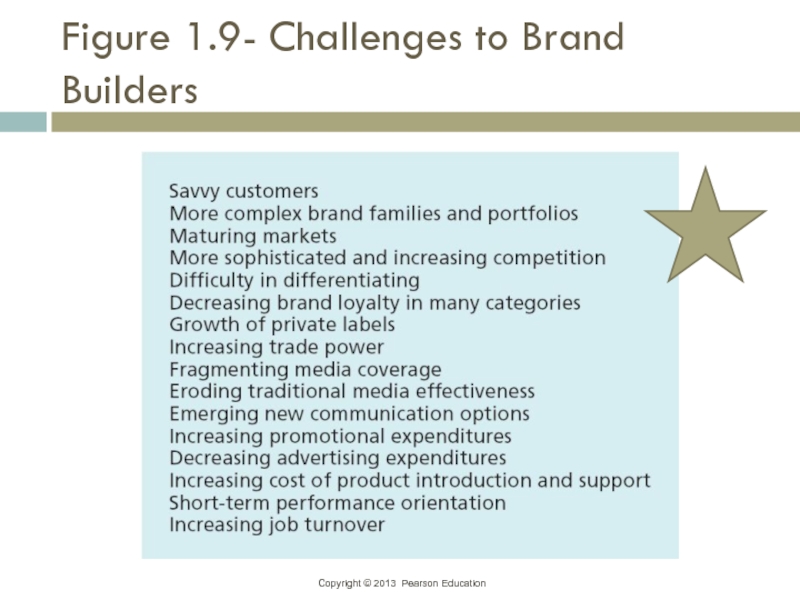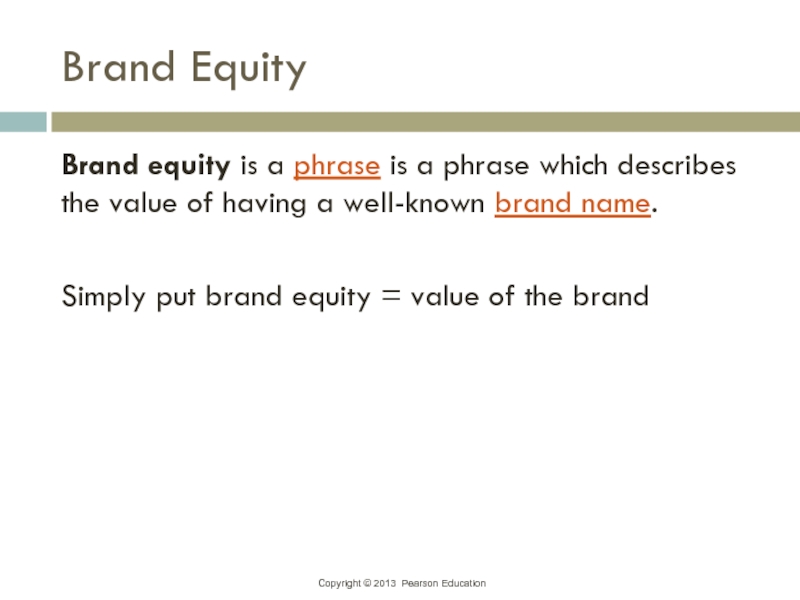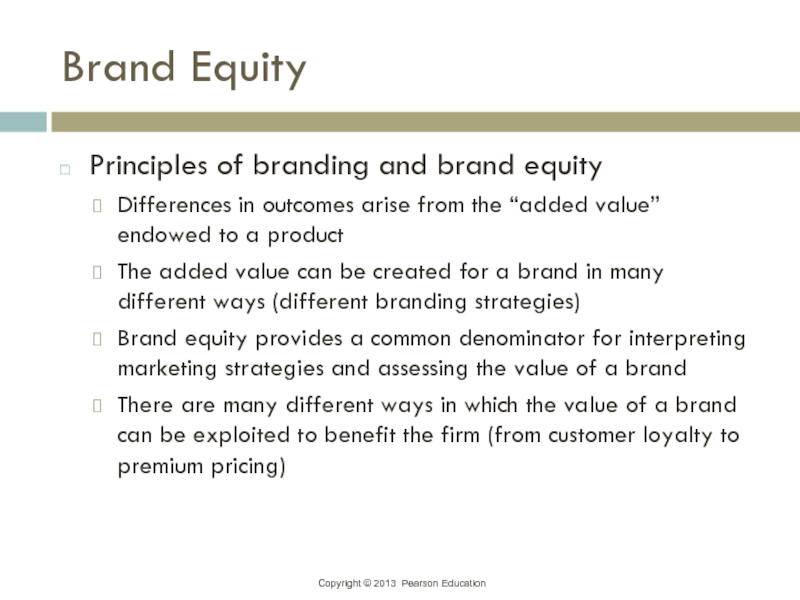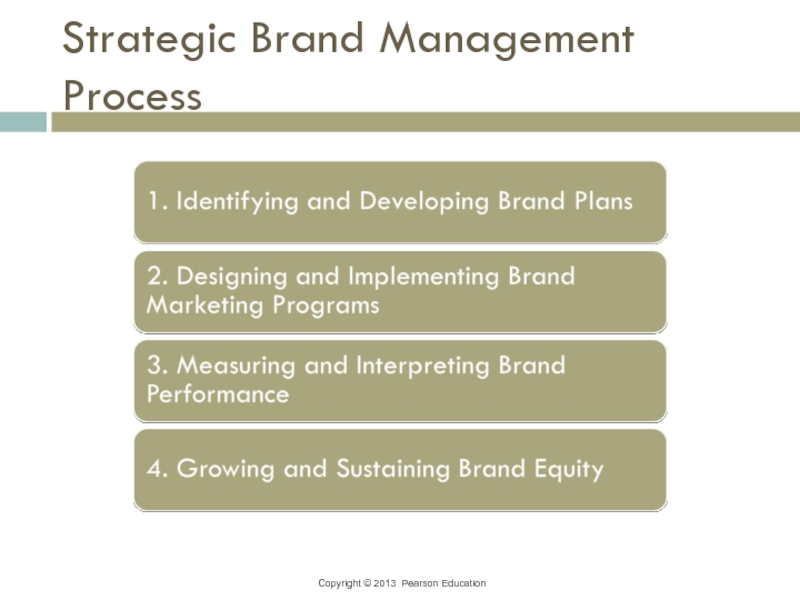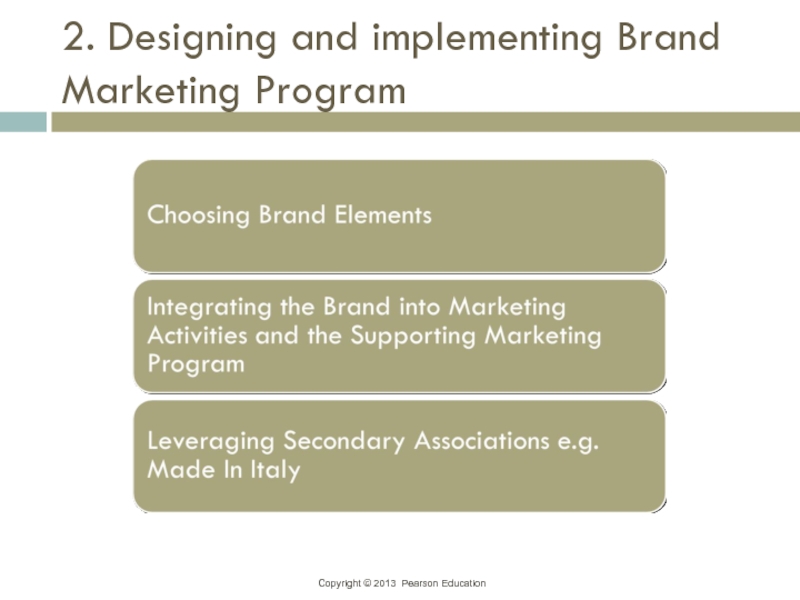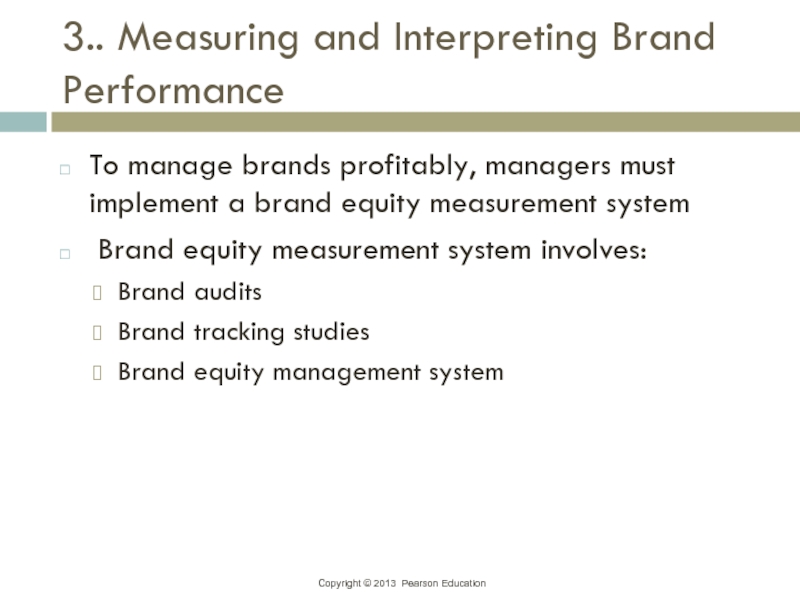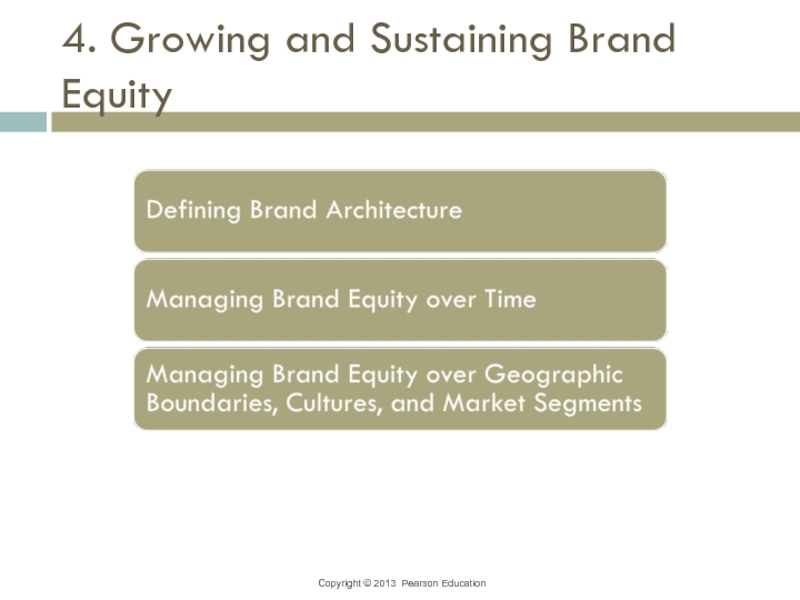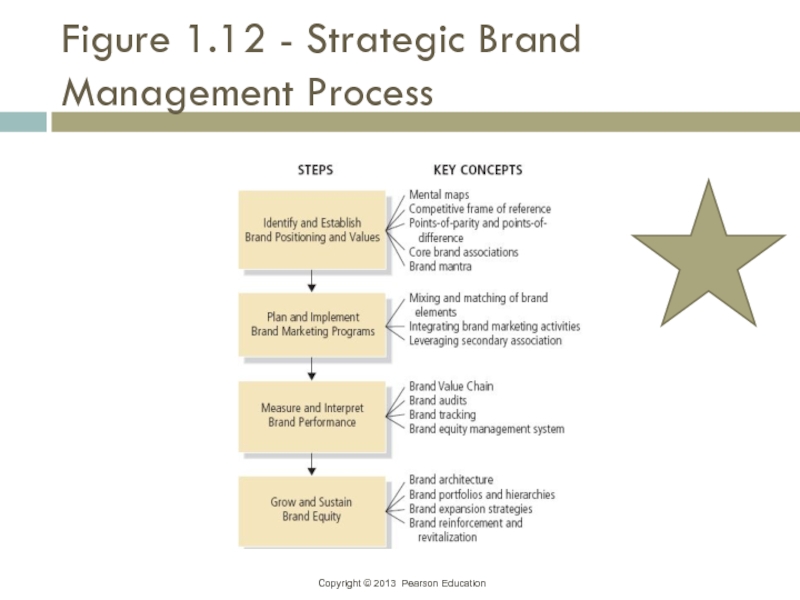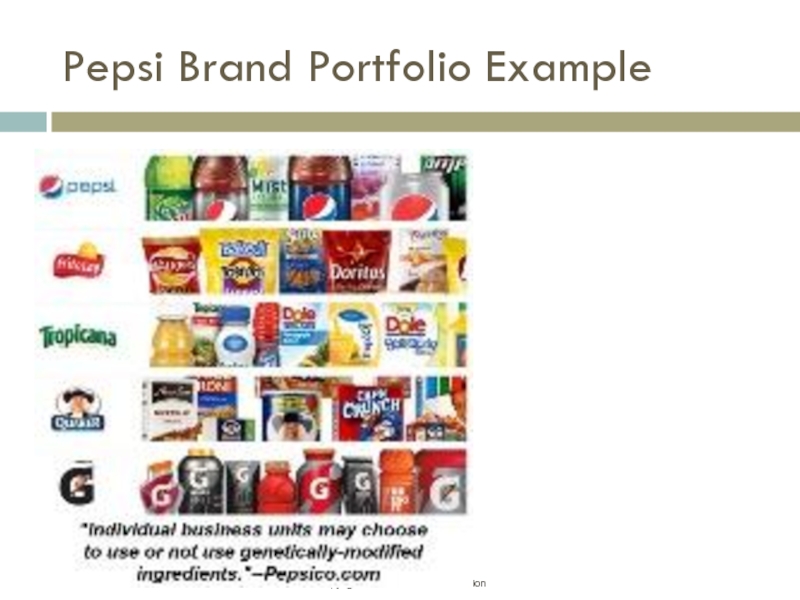- Главная
- Разное
- Дизайн
- Бизнес и предпринимательство
- Аналитика
- Образование
- Развлечения
- Красота и здоровье
- Финансы
- Государство
- Путешествия
- Спорт
- Недвижимость
- Армия
- Графика
- Культурология
- Еда и кулинария
- Лингвистика
- Английский язык
- Астрономия
- Алгебра
- Биология
- География
- Детские презентации
- Информатика
- История
- Литература
- Маркетинг
- Математика
- Медицина
- Менеджмент
- Музыка
- МХК
- Немецкий язык
- ОБЖ
- Обществознание
- Окружающий мир
- Педагогика
- Русский язык
- Технология
- Физика
- Философия
- Химия
- Шаблоны, картинки для презентаций
- Экология
- Экономика
- Юриспруденция
Brands and brand management (chapter 1) презентация
Содержание
- 1. Brands and brand management (chapter 1)
- 2. Learning Objectives Define “brand,” state how
- 3. History of Branding The word BRAND is
- 4. What is a brand? According to AMA
- 5. Even without the logo…
- 6. Simply, Branding is a promise given to
- 7. In class reading: Coca Cola’s Branding Lesson Page 32 from textbook
- 9. Q to the class Why do brands/branding
- 10. What is a Brand? Set of expectations, memories, stories and relationships taken together!
- 11. Brand Elements Different components that identifies and
- 12. Brand elements in many forms…
- 13. Brand elements come together… https://www.youtube.com/watch?v=auEdEYY3ao4 Advertisement for Audi…
- 14. Brand versus Product
- 15. E.g. customer advice
- 16. 5 product levels Core benefit: Fundamental need.
- 17. But sometimes..
- 18. Brand vs Product The new competition is
- 19. To Sum Up .... Through branding, organizations:
- 20. Why Do Brands Matter?
- 21. Consumers Consumer: Encompass all types of customers,
- 22. Consumers Signal product characteristics and attributes On
- 23. E.g. Social Risk (embarrassment)
- 24. Firms Brands provide valuable functions Simplify product
- 25. Figure 1.3 - Roles that Brands Play
- 26. Best Global Brands 2016
- 27. Q: Can Anything Be Branded? To brand
- 28. Can Anything Be Branded
- 29. Physical Goods Businesses put the fate of
- 30. Example; Sony MP3 vs. Apple iPod
- 31. Physical Goods: B2B Branding B2B brands E.g.
- 32. Brand Hierarchy of Toyota
- 33. Services
- 34. Can Anything Be Branded
- 35. Personal Brands
- 36. Can anything be branded
- 37. To Sum up.... Branding is universal and
- 38. Strong Brands Brands that have been market
- 39. Factors Responsible for Branding Challenges
- 40. Factors Responsible for Branding Challenges
- 41. Figure 1.9- Challenges to Brand Builders
- 42. Brand Equity Brand equity is a phrase
- 43. Brand Equity Principles of branding and
- 44. Strategic Brand Management Process
- 45. 1.Identifying and Developing Brand Plans
- 46. 2. Designing and implementing Brand Marketing Program
- 47. 3.. Measuring and Interpreting Brand Performance
- 48. 4. Growing and Sustaining Brand Equity
- 49. Figure 1.12 - Strategic Brand Management Process
- 50. Pepsi Brand Portfolio Example
Слайд 2Learning Objectives
Define “brand,” state how brand differs from a product,
Summarize why brands are important
Explain how branding applies to virtually everything
Describe the main branding challenges and opportunities
Identify the steps in the strategic brand management process
Слайд 3History of Branding
The word BRAND is derived from the Old Norse
2 tricky words: identify and differentiate
Слайд 4What is a brand?
According to AMA (American Marketing Association)
A brand is
2 tricky words: identify and differentiate
Слайд 6Simply,
Branding is a promise given to the customer; a promise that
Слайд 9Q to the class
Why do brands/branding matter? Why is it important?
1.
(E.g. in a supermarket to pick up coca-cola, le cola, bi cola, pepsi)
2. Reduces risk
3. Set expectations
Слайд 11Brand Elements
Different components that identifies and differentiates a brand
Name, logo, symbol,
Can be based on people, places, things, and abstract images
Слайд 13Brand elements come together…
https://www.youtube.com/watch?v=auEdEYY3ao4
Advertisement for Audi…
Слайд 165 product levels
Core benefit: Fundamental need. A lady wants to enhance
Generic product: A basic version of the product with no distinguishing features. What the product is made up? Blush, eye shadow trays, lipsticks, mascara and so on.
The expected product: Attributes and features that a consumer generally expect ( Quality first but in our makeup set case, the color of the eye shadows must have good pigmentation. Everything included must be able to stay on for hours. )
The augmented product: Adding extra features beyond expectations. The examples of augmented product for a makeup kit can be a surprise gift, samples, coupon for the next purchase, or adding an extra cosmetic inside not offered by other brands. Competition mostly takes place in this segment.
Potential product level: all the transformations that the same product can undergo. The ultimate product. In make up, the continuous development in the make up like removing parabens or adding aloe-vera.
Слайд 18Brand vs Product
The new competition is not between what companies produce
Слайд 19To Sum Up ....
Through branding, organizations:
Create perceived differences among products
Develop loyal
Create value that can translate to financial profits
Tricky word PREMIUM PRICING
Слайд 21Consumers
Consumer: Encompass all types of customers, including individuals as well as
Functions provided by brands to consumers
Identify the source or maker of the product
Simplify product decisions
Lower the search costs for products internally (thinking) and externally (looking around)
Helps set reasonable expectations about what consumers may not know about the brand
Слайд 22Consumers
Signal product characteristics and attributes
On the basis of attributes products can
Search goods (e.g. grocery products-visual inspection)
Experience goods (e.g. automobile tires-experience needed)
Credence goods (e.g. insurance coverage-rarely experienced)
Reduce risks in product decision
These risk can be categorised as
Functional ,physical, financial, social psychological, and time
Слайд 24Firms
Brands provide valuable functions
Simplify product handling and tracing
Help organizing inventory and
Offer the firm legal protection for unique features or aspects of the product (trade marks, patents, copyrights and designs)
Provide predictability and security of demand for the firm (customer satisfaction leads to loyalty ends up with repeat purchase)
Creates barriers of entry for competitors and provide a powerful means to secure competitive advantage
Слайд 27Q: Can Anything Be Branded?
To brand a product marketers should identify
- WHO the product is
- Provide meaning for the brand WHAT it stands for
Since branding is about the perceptions of the consumer and rooted deeply in the minds of the consumers.
Marketers benefit from branding whenever consumers are in a choice situation.
Слайд 29Physical Goods
Businesses put the fate of their company in the hands
Even commodities can be branded E.g. De Beers
Many hi tech companies see branding as naming. But innovation is not solely enough for marketplace success. See the next slide!
Слайд 31Physical Goods: B2B Branding
B2B brands E.g. INTEL (Intel Inside Campaign), Accenture
Guidelines for marketers of B2B brands
Ensure that entire organization supports branding and brand management. (especially salesforce since B2B requires more personal selling)
Adopt a corporate branding strategy if possible and create a well-defined brand hierarchy.
Frame value perceptions. (putting best foot forward)
Link relevant non-product-related brand associations (superior customer service, financial easiness)
Find relevant emotional associations for the brand.
Segment customers carefully both within and across companies.
Слайд 37To Sum up....
Branding is universal and pervasive in different product categories
Applicable to both tangible and intangible offerings of an organization
Technological developments have impacted the way firms market their offerings
Organizations reap financial benefits from positive brand images
Слайд 38Strong Brands
Brands that have been market leaders in their categories for
Any brand is vulnerable and susceptible to poor brand management
Слайд 42Brand Equity
Brand equity is a phrase is a phrase which describes
Simply put brand equity = value of the brand
Слайд 43Brand Equity
Principles of branding and brand equity
Differences in outcomes arise
The added value can be created for a brand in many different ways (different branding strategies)
Brand equity provides a common denominator for interpreting marketing strategies and assessing the value of a brand
There are many different ways in which the value of a brand can be exploited to benefit the firm (from customer loyalty to premium pricing)
Слайд 47
3.. Measuring and Interpreting Brand Performance
To manage brands profitably, managers must
Brand equity measurement system involves:
Brand audits
Brand tracking studies
Brand equity management system

